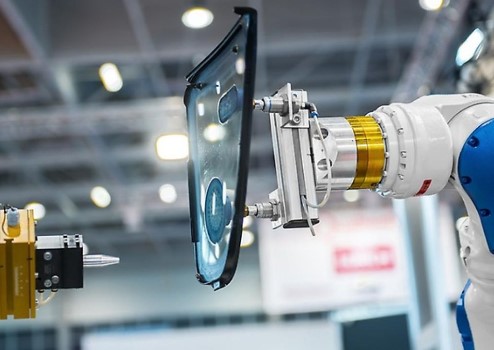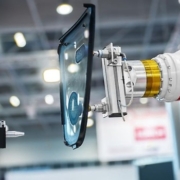The AI Technology Impacts on Automotive Industry
First, a few viewpoints on artificial intelligence: It is an oxymoron! Artificial intelligence is neither artificial nor intelligent. Without considerable human instruction, AI cannot identify objects. In terms of identifying, comprehending, and categorizing things or scenarios, AI operates on an entirely different logic than humans. The term “artificial intelligence” suggests that it is comparable to human intelligence.
In this blog, we’ll examine the following points:
- How does artificial intelligence tackle a problem?
- What are the cons and pros of artificial intelligence in automotive?
- What are the unique hurdles associated with using AI in automotive?
- Which areas of automotive electronics make use of artificial intelligence?
- Which future sectors of automotive electronics will depend on AI technologies?
AI development is divided into three stages: developing AI models, training with relevant data, and finally, inferencing or utilizing the taught model to solve problems.
Most artificial intelligence models are constructed using numerous neural and learning networks variants.
Advantages of artificial intelligence for automotive industry
AI plays an important role in improving automotive technology, given the car industry’s plethora of complex issues. The potential of deploying AVs is largely contingent on developing new AI technologies. There seems to be widespread agreement that neural network advancements are the most promising path forward for future AV deployment success.
It means that more advancements are imminent, with potentially game-changing innovation. With continued global investment in AI, it is a safe bet that AI and neural networks will tackle many increasingly complicated problems—including those facing the automobile sector. However ,it will be too early to say that AI can benefit the automotive industry.

AI security
Automotive AI demands a far higher level of security than other consumer markets. As a result, a higher focus on AI safety and research and development is required. The CSET paper classifies AI failures into three broad categories: robustness, specification, and assurance. Robustness failure occurs when artificial intelligence systems encounter aberrant or unexpected inputs, causing them to malfunction.
Specification failure occurs when an AI system attempts to do something slightly different than the creator anticipated, resulting in unexpected behaviors or side consequences. Failure of assurance implies that the AI system cannot be monitored or controlled sufficiently during operation.
Automotive artificial intelligence
The table below highlights how artificial intelligence is being implemented into automotive electronics. Not covered are AI applications in automotive production, supply chain management, quality control, marketing, and other fields where AI plays an important role.
Neural network decisions must be intelligible. Otherwise, it is difficult to know how they operate and remedy faults or prejudice.
Additionally, neural network judgments must be stable—that is, they must stay constant despite tiny variations in visual input. It is particularly critical for AVs. Small black and white tape strips on stop signs may render them invisible to vision systems powered by artificial intelligence. That is an example of the unacceptably poor performance of a neural network.
Improved technology is required for AV systems to comprehend edge circumstances or novel driving occurrences not seen during earlier software driver training. It continues to be a significant impediment to the mass deployment of AV systems.
Current use of artificial intelligence
The most effective use of artificial intelligence in automotive has been speech recognition and user interfaces. Alexa, CarPlay, and Android Auto, among other features, have been included in most new models and model revisions. These apps take advantage of the artificial intelligence technologies found in smartphones and consumer devices and are intended for entertainment and human-machine interactions.
Remote diagnosis is a critical component of telematics. For example, the incorporation of AI technology may aid in the prediction of future device problems. DMS is projected to have substantial expansion as AI technology improves.
Numerous ADAS capabilities, from adaptive cruise control to numerous variants of parking assist, include AI technology. New types of L1 and L2 ADAS cars will include increasing levels of AI technology.
Emerging applications of artificial intelligence
Numerous OEMs are developing limited driving pilots. They are often referred to as L2+. However, that word is not defined in current standards. The term “autopilot” is a misnomer since it confounds users and suggests more capacity than exists. And they have resulted in collisions.
Although L3 vehicles have been available for some years, regulatory constraints have restricted deployment. Regulations permit L3 autonomous cars to evolve, and L3 vehicles extensively use AI technology.
Both OTA software and cybersecurity tasks incorporate artificial intelligence technologies via software clients, cloud-based services, and analytics software.
An emerging AI application is creating and testing autonomous vehicles for various AV use cases. Around 5,000 autonomous vehicles are in testing or pilot mode, largely in China and the United States. They include autonomous cargo vehicles, autonomous trucks, robot-taxis, and fixed-route autonomous vehicles.
Future applications of artificial intelligence
AV applications are the most lucrative and challenging for AI technology. The objective is to create a software driver that is superior to the finest human drivers while avoiding the limitations associated with human behavior.
Software development is ripe for advancements in AI-based technologies. Detecting and repairing software problems is expected to become a reality in the next decade due to innovative AI technologies.
Perhaps the most urgent requirement for the automotive and other sectors is for cybersecurity advancements enabled by AI technology. The criteria continue to draw substantial investment.
In conclusion
Artificial intelligence has emerged as a key factor in the automobile sector (pun intended). Until now, two firms have paved the way for AI technologies in the automobile industry: Nvidia and Tesla. Nvidia is unquestionably the market leader in hardware and software standards for developing and deploying AI models. Tesla is progressively integrating AI into its products, most notably their excessively ambitious autopilot.
A subsequent column will discuss the outcomes of Tesla’s recent AI Day, which included ground-breaking initiatives targeted towards the future of neural network training.
Meanwhile, a growing number of businesses are focusing on automotive AI: Mobileye is the market leader in ADAS advancements and is developing autonomous vehicles; Google-Waymo pioneered the creation of software drivers.
AI developers must heed warning flags to avoid stifling innovation via unexpected effects as safety concerns mount. Unlocking AI black boxes that impede the adoption of trust systems are at the top of this list. In other places, bias in training data is a growing issue that is difficult to quantify and hence difficult to remedy. If you have any automotive rapid prototyping requirements ,please get in touch with us .

